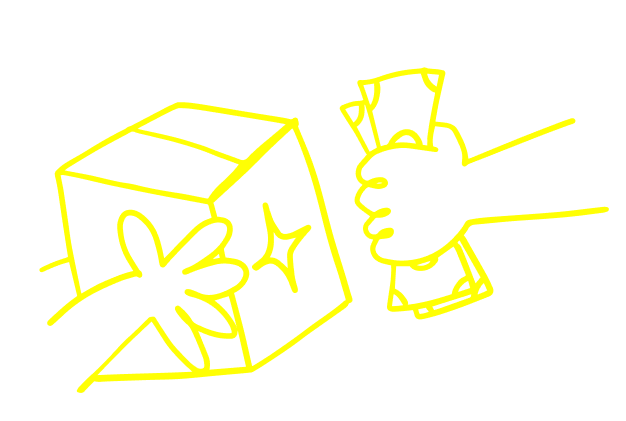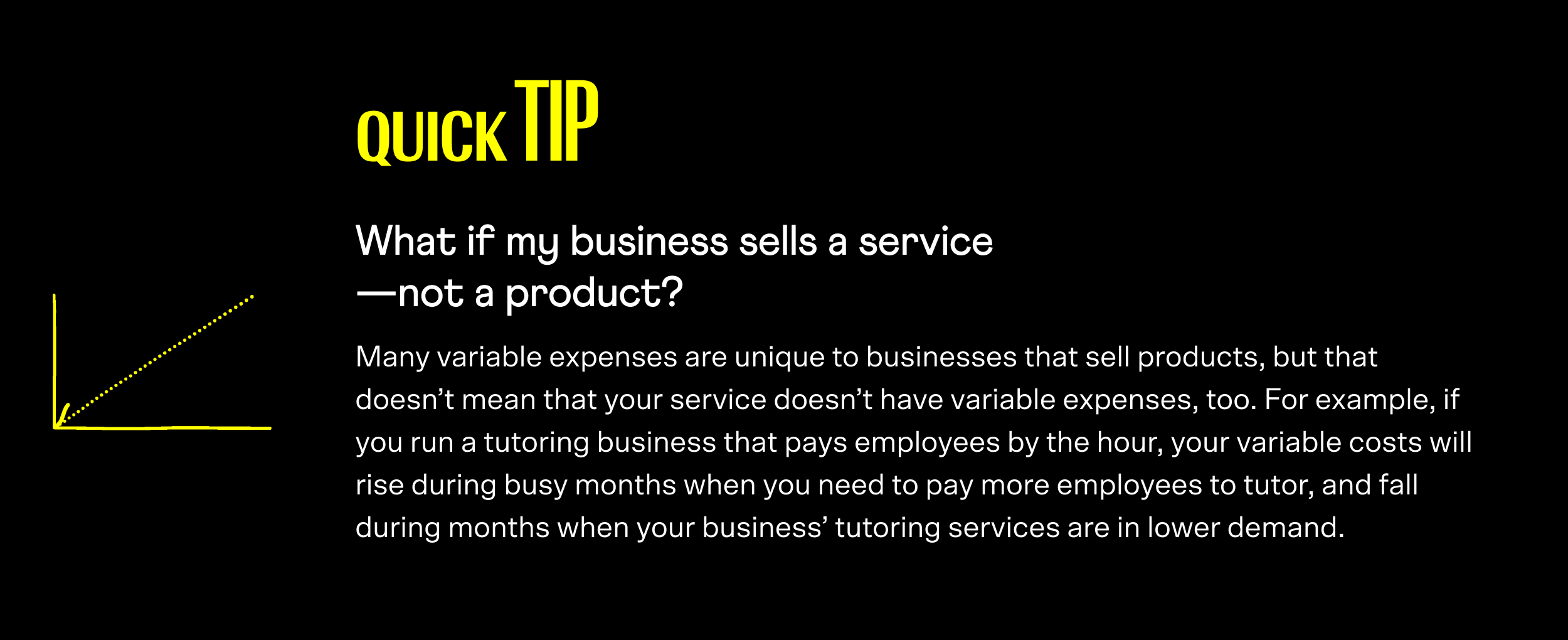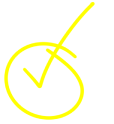

Understanding
your costs
Fixed expenses
Fixed expenses are costs that remain the same every month, regardless of how many sales you make.
Your business’ fixed expenses are likely unique to your industry, but a few common ones include:
Rent, like rent for a workspace, storage space, or studio
Loan payments, like car and equipment loans
Some utilities and services, like your cell phone, internet, or software subscriptions
Variable expenses
Variable expenses are costs that can vary from month to month.
Typically, these expenses grow when you make more sales, and shrink when you make fewer sales. Your business’ variable expenses are likely unique to your industry, but a few common ones include:
Hourly labor
Production costs, like raw materials
Packaging and shipping costs
Maintenance and equipment repairs
Some utilities, like gas and electricity


Budgeting your expenses
When planning your business’s budget, you’ll need to take both fixed and variable expenses into account.
Fixed expenses are easy to budget for—they are the same every month. When it comes to budgeting for variable expenses, you’ll have to take a look at what you already know about your business’s expenses and output. The more information you have, the easier it will be for you to plan for the future.
Your business’ variable cost per unit can help you identify areas for expansion and opportunity.
An easy way to determine your variable cost per unit is by adding up the number of units you’ve produced over your chosen time period, like the past year, then adding up all your business’s variable expenses for that same timeframe. Your variable cost per unit is the sum of your variable expenses divided by the number of units.










Making your expenses
work for you






READY
WHEN YOU ARE




